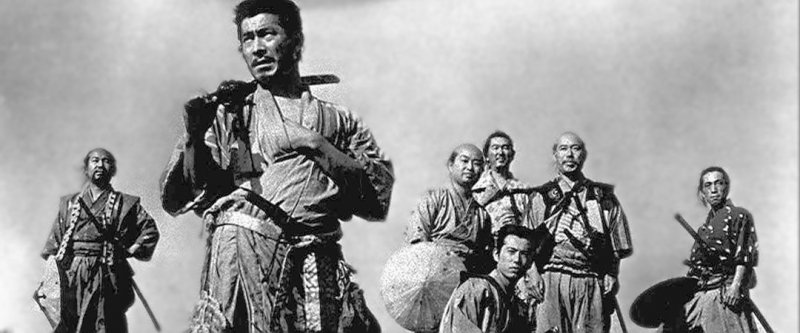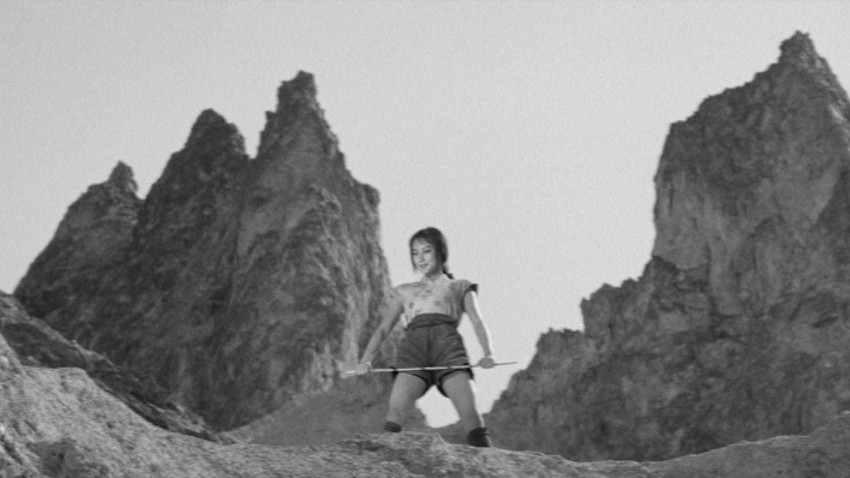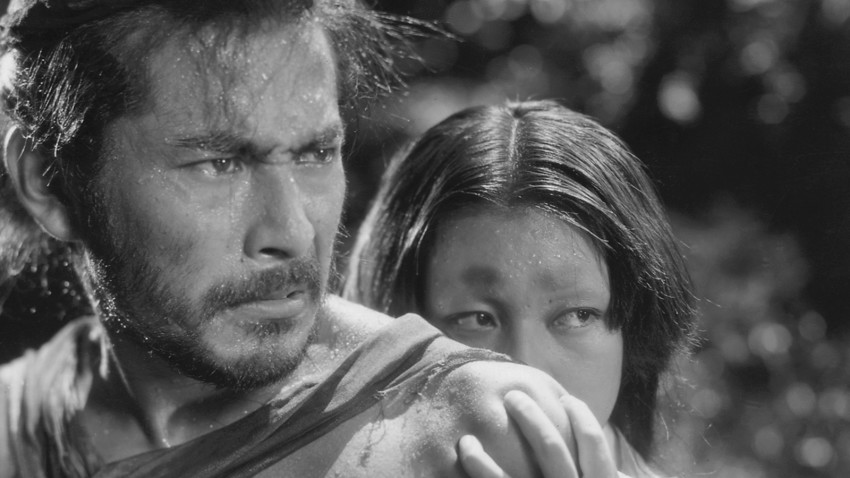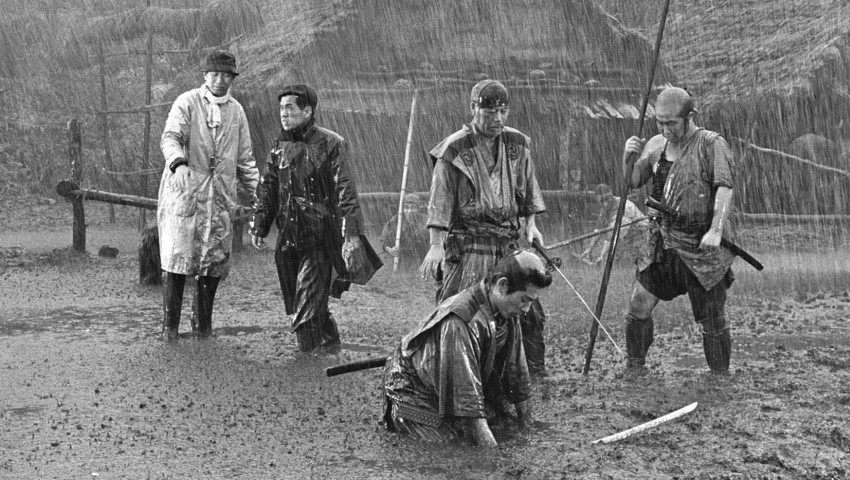Books: On Kurosawa
May 15, 2019 · 0 comments
By Jasper Sharp.
 The robustly-designed and impressively laid-out new tome On Kurosawa: A Tribute to the Master Director by Peter Tasker inevitably prompts the same questions I raised a year ago in my review of Paul Anderer’s Kurosawa’s Rashomon. Does the world really need another book on this director, and what exactly is it about Kurosawa that keeps authors coming back again and again?
The robustly-designed and impressively laid-out new tome On Kurosawa: A Tribute to the Master Director by Peter Tasker inevitably prompts the same questions I raised a year ago in my review of Paul Anderer’s Kurosawa’s Rashomon. Does the world really need another book on this director, and what exactly is it about Kurosawa that keeps authors coming back again and again?
There has been a regrettable tendency amongst many Japan-focussed scholars, critics and cinephiles to dismiss the country’s most famous filmmaker and his works as “not really Japanese.” I shall confess to sometimes falling into this trap myself, but there have been many figures even in Japan who have treated Kurosawa as something outside of local cinematic tastes, traditions and aesthetics, unlike compatriots such as Ozu and Mizoguchi.
As Tasker notes: “Sometimes the Japanese write ‘Kurosawa’ not in kanji characters, but in the katakana script used mainly for foreign loan-words or special emphasis. The formulation comes with the phrase ‘sekai no Kurosawa’, literally “Kurosawa of the world’.”
There might possibly be a slightly pejorative intent behind this label, although as Tasker goes on to argue: “By de-Japanizing his identity, the Japanese media are acknowledging something else, too; that as an artist Akira Kurosawa has transcended his individual origins and exists in another realm where Japan and Japanese-ness no longer define him. Or put it another way, ‘Sekai no Kurosawa’ is a gift from Japan to the world.”
Perhaps this is the obvious point that really cannot be denied among the interminable and rather pointless “Kurosawa versus Ozu” type of debates – that of global influence. Tasker quotes Francis Ford Coppola’s opinion that “Kurosawa is notable amongst great film directors for having produced not one or two masterpieces, but five or six – and also the tremendous variety of his offerings.” His name is arguably the most internationally well-known of any Japanese figure of the 20th century, not just from the world of film. Even those who haven’t seen his work will be aware of its influence, and have some sort of mental image as to what might be expected from it.
 Without Seven Samurai (1954) there would be no The Magnificent Seven (1960), that is for certain, but consequently no The Dirty Dozen (1967), Sholay (1975), Battle Beyond the Stars (1980) or any number of similar titles featuring a ragtag gang of action men thrown together for a Manichean do-or-die battle. Without Hidden Fortress (pictured, 1958), there would be no Star Wars (1977). And what might Sergio Leone’s Dollars trilogy (1964-66) of spaghetti Westerns have turned out like in a world in which Yojimbo (1961) or Sanjuro (1962) had never happened? Even sticking within an Asian context, we can see in Kurosawa’s debut with the judo saga Sanshiro Sugata (1943) and its 1945 sequel the seeds of the later flourishing field of martial arts films, or in Drunken Angel (1949) the nascent yakuza movie.
Without Seven Samurai (1954) there would be no The Magnificent Seven (1960), that is for certain, but consequently no The Dirty Dozen (1967), Sholay (1975), Battle Beyond the Stars (1980) or any number of similar titles featuring a ragtag gang of action men thrown together for a Manichean do-or-die battle. Without Hidden Fortress (pictured, 1958), there would be no Star Wars (1977). And what might Sergio Leone’s Dollars trilogy (1964-66) of spaghetti Westerns have turned out like in a world in which Yojimbo (1961) or Sanjuro (1962) had never happened? Even sticking within an Asian context, we can see in Kurosawa’s debut with the judo saga Sanshiro Sugata (1943) and its 1945 sequel the seeds of the later flourishing field of martial arts films, or in Drunken Angel (1949) the nascent yakuza movie.
Tasker also helpfully turns his attention to a number of lesser-known early post-war works in which Kurosawa was involved merely as screenwriter, in works that can be seen with hindsight as remarkably formative within the history of Japanese genre cinema. Snow Line (1947), directed by Senkichi Taniguchi, is notable for providing Kurosawa’s onscreen avatar, Toshiro Mifune, with his first screen break as one of three armed robbers on the run through a treacherous mountain landscape. The same director next tackled Kurosawa’s script for Jakoman and Tetsu (1948), with Mifune as the latter, a heroic loner who wanders into a small fishing outpost to run the eye patch-wearing, rifle-packing extortionist and all-round bullyboy Jakoman out of town. With its scenes of manly mano-a-mano staged amongst the majestic landscapes of Hokkaido, Jakoman and Tetsu provides the prototype for the peculiar Eastern Western (or Sukiyaki Western) action sub-genre that thrived in the early 1960s in Japan. Interestingly, its remake in 1960, starring Ken Takakura as Tetsu, provided an early directing appointment for Kinji Fukusaku at Toei.
Indeed, we could well describe Kurosawa as not merely a filmmaker, but a genre-maker, although naturally the originals themselves would hardly have been able to spawn their respective genres had they not that distinctive quality making them so universally potent.
 And how could we forget the narrative revolution of Rashomon (pictured, 1950), the title which put Japanese film on the map as far as the West was concerned? Its win of the Golden Lion Award at the Venice Film Festival and the Academy Honorary Award made Kurosawa “famous globally before he became famous in Japan – at a time when the only well-known Japanese overseas would have been Emperor Hirohito and General Tojo.”
And how could we forget the narrative revolution of Rashomon (pictured, 1950), the title which put Japanese film on the map as far as the West was concerned? Its win of the Golden Lion Award at the Venice Film Festival and the Academy Honorary Award made Kurosawa “famous globally before he became famous in Japan – at a time when the only well-known Japanese overseas would have been Emperor Hirohito and General Tojo.”
The legacy of Rashomon, of course, is its ground-breaking approach to plotting as it dug down for an ever-elusive truth behind a noblewoman’s assault in a secluded forest grove by way of the testimonies of those party to the crime. One might equally pin its success on the screenplay of Shinobu Hashimoto, the man (who died just last year, on 19 July 2018, aged 100) behind many a Kurosawa classic including Seven Samurai, Ikiru (1952), I Live in Fear (1955) and Throne of Blood (1957). As Tasker emphasises himself at one point: “Kurosawa believed that the crucial factor in the success of a film was the screenplay. A mediocre director, he maintained, could make a decent film from a good screenplay, whereas a good director could not make a good film from a lousy one.”
Kurosawa also believed in the importance of teamwork in the filmmaking field. Alongside the aforementioned Hashimoto and Mifune, regular collaborators included the actor Takashi Shimura, artistic director Yoshiro Muraki, the script editor and later assistant director Teruyo Nogami, and composer Fumio Hayasaka. He used the same cinematographer, Takao Saito, on his final offering, Maadadayo (1995), as he had on his early One Wonderful Sunday almost half a century before in 1947, while his long-running personal and professional relationship with Godzilla director Ishiro Honda has already been well documented.
To push this point, Tasker includes a brief overview of recent stinkers including Shinji Higuchi’s The Hidden Fortress: The Last Princess (2008) and the 2007 productions of Ikiru and High and Low by Asahi TV, to remind 21st-century viewers just how far away from the Golden Age of Japanese cinema we have travelled.
If what I have written so far has been more of a eulogy to Kurosawa than a review of the book in hand, this is not only because Kurosawa’s works are too often overshadowed by his own towering legacy, arguably more widely known than widely seen nowadays, but because it is also in the spirit of Tasker’s own admiring tone.
 On Kurosawa is not so much a dense analysis of the director’s oeuvre, nor a chronicle of his life, his working methods or his working relations. There are aspects of all of these things within its pages, but the style is more fragmentary, a compendium of brief essays and notes on different aspects of each of Kurosawa’s films or focussed on different phases of his life, quotes from famous figures, poems (including ones on Setsuko Hara’s nose, Takashi Shimura’s mouth, and a couplet on Mifune’s eyebrows) and some beautifully reproduced images from his films, all put together not so as to be consumed in one sitting from cover to cover but dipped into and savoured again and again.
On Kurosawa is not so much a dense analysis of the director’s oeuvre, nor a chronicle of his life, his working methods or his working relations. There are aspects of all of these things within its pages, but the style is more fragmentary, a compendium of brief essays and notes on different aspects of each of Kurosawa’s films or focussed on different phases of his life, quotes from famous figures, poems (including ones on Setsuko Hara’s nose, Takashi Shimura’s mouth, and a couplet on Mifune’s eyebrows) and some beautifully reproduced images from his films, all put together not so as to be consumed in one sitting from cover to cover but dipped into and savoured again and again.
One could cynically say we’ve read much of this kind of stuff before, but really, we haven’t. An early section contrasts Kurosawa’s post-war reconfiguration of the samurai figure with the atavistic nationalism and aesthetic narcissism of novelist Yukio Mishima, who described Seven Samurai as being “at the intellectual level of a middle-school pupil.”
Interestingly both, for their own separate reasons, attempted suicide in the early 1970s. Mishima’s dramatic and highly public enactment of his interpretation of the bushido code was the more successful. Kurosawa’s own attempt little more than a year later, on 22nd December 1971, was an equally messy but more private and desperate affair, born out of disillusionment with his own place within a rapidly-changing Japan and a rapidly-changing Japanese film industry after his infamous firing by Twentieth-Century Fox from the US-Japanese co-production Tora! Tora! Tora! (Richard Fleischer, 1970; the Japanese sequences were eventually helmed by Toshio Masuda and Kinji Fukasaku, although Tasker neglects to mention Masuda) and the critical and commercial humiliation of his first colour film Dodeskaden (1970). Fortunately the attempt failed, and Kurosawa went on to direct a further six films.
Tasker also points out that this attempt followed shortly after “the Emperor of Japanese cinema” behind Seven Samurai was reduced to making his only foray into television documentary, The Song of the Horse, broadcast on August 1971 on NTV, inspiring an interesting meditation on the role of horses in Kurosawa’s films and in Japanese society, leading from the director’s early role as assistant director on Kajiro Yamamoto’s wartime drama Horse (1943) to a throwaway scene of a horse outside a butcher’s shop in his swansong Maadadayo; a far cry away from the epic equestrian battles from his mid-1950s zenith that one most associates with his name.
There are personal portraits too, although not always particularly flattering ones, such as his cantankerous (to say the least) treatment of Andrei Konchalovsky, a Russian filmmaker who had defected to America where he made the action movie Runaway Train (1985), based on a script Kurosawa had written in the mid-1960s that might have been provided him with the Hollywood career he sorely needed at this point. During his visit to Tokyo to promote the film, Konchalovsky found himself lambasted for his lack of patriotism and support for communism by a director who had turned to both Gorky and Dostoevsky for inspiration and whose mid-1970s comeback film Dersu Uzala (1975) was bankrolled by the Soviet Union. (“The interpreter stopped for a while, trying to find an appropriate phrase. He was really obscene. I said you had never lived in Russia. I had lived there most of my life. I know what communism is like. He didn’t behave like a Japanese because Japanese never show their anger…”)
Not that Mifune fares any better…
 The most unique components of On Kurosawa are the more poetic segments inspired by sequences from the master’s films and recounted in first-person voice as if by the characters from within them: the duplicitous doppelganger of Kagemusha (pictured) explains the backstory as to how he came to be floating face down in a fast-flowing river; the post-war decadent novelist recounts a memorably evening of merry-making with the cancer-stricken petty bureaucrat of Ikiru as he attempts to teach him how to live his life to the full.
The most unique components of On Kurosawa are the more poetic segments inspired by sequences from the master’s films and recounted in first-person voice as if by the characters from within them: the duplicitous doppelganger of Kagemusha (pictured) explains the backstory as to how he came to be floating face down in a fast-flowing river; the post-war decadent novelist recounts a memorably evening of merry-making with the cancer-stricken petty bureaucrat of Ikiru as he attempts to teach him how to live his life to the full.
And in this respect, this book does a great job in invoking memories of some of the most striking and powerful sequences ever committed to celluloid – the chaotic muddy climax of the battle that rounds off Seven Samurai through the haunting Noh-inspired atmospherics of his Macbeth rendition Throne of Blood and jaw-dropping single take shot of an annihilated Lord Hisatora in Ran (1985), the wind tearing through his hair and robes as he is driven from the flaming remains of the castle in which he has taken refuge – while shedding fresh light upon them.
Kurosawa aficionados will undoubtedly find much of interest here, and for those less familiar with the director and his wider oeuvre, what better place to learn?
On Kurosawa: A Tribute to the Master Director by Peter Tasker is published by Zen Foto Gallery.
Leave a Reply